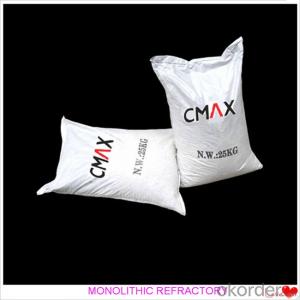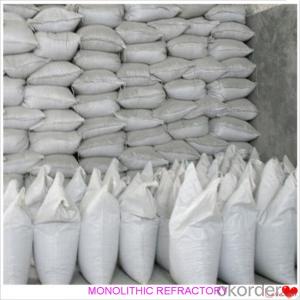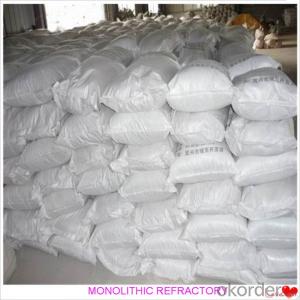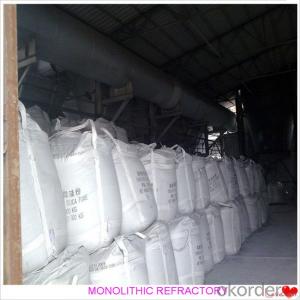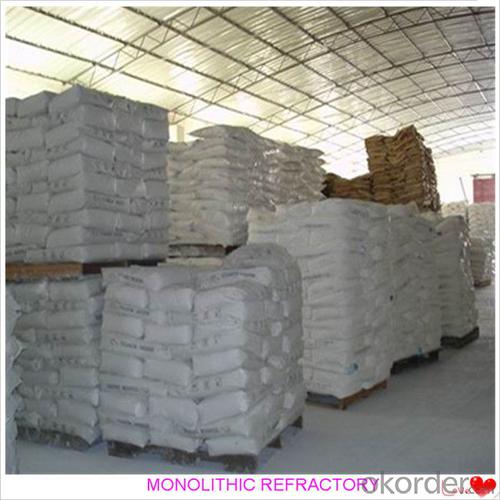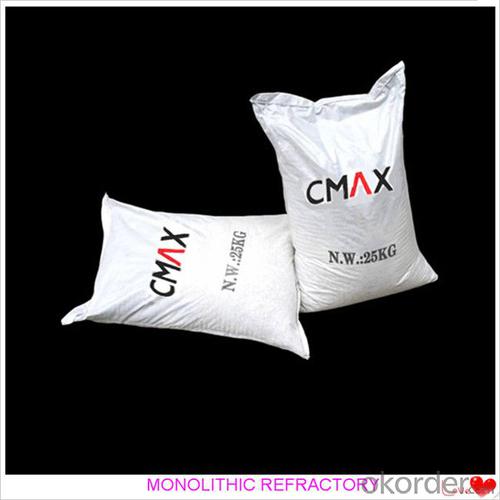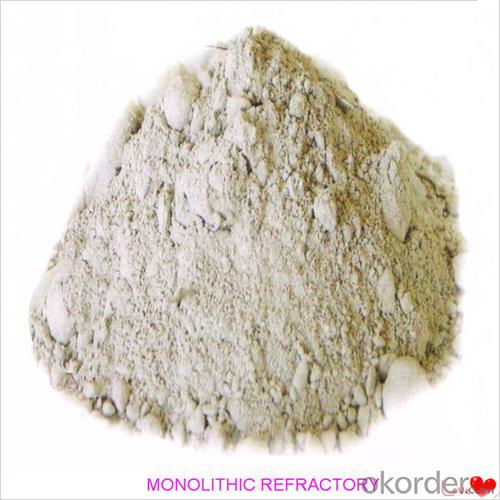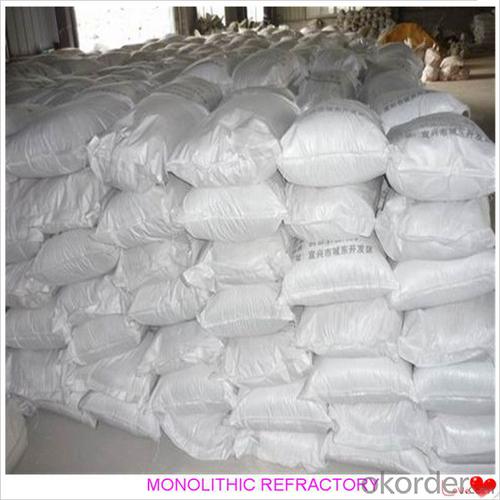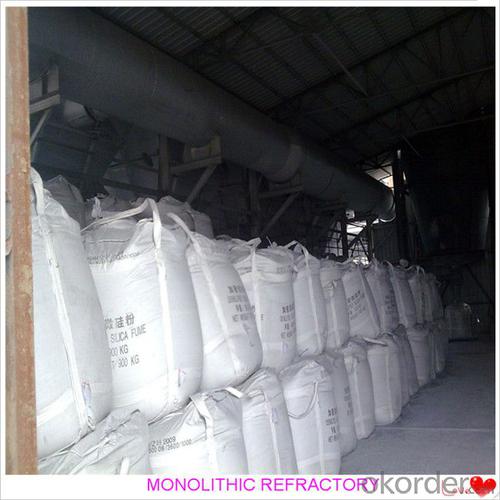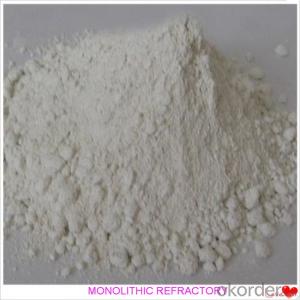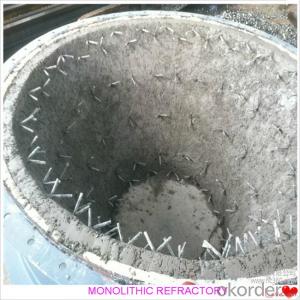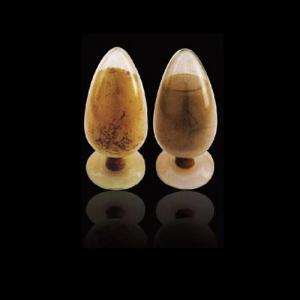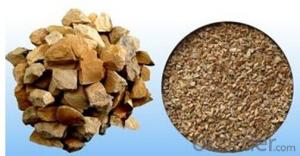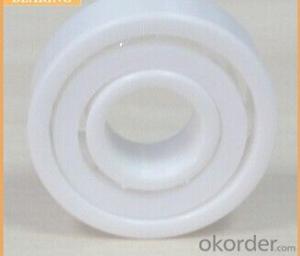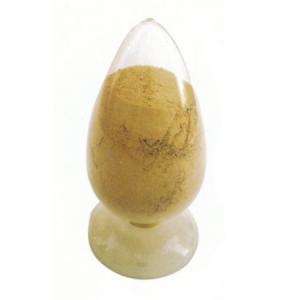Monolithic Refractories for Iron and Steel Industry - High Alumina Castable for Fireside and Industrial Furnace
- Loading Port:
- China main port
- Payment Terms:
- TT OR LC
- Min Order Qty:
- 1000 kg
- Supply Capability:
- 3000000 kg/month
OKorder Service Pledge
OKorder Financial Service
You Might Also Like
High Alumina Castable For Fireplace and Industrial Furnace in Iron and Steel
Product Description:
High alumina castable is manufactured according to international standards. The product is famous for its excellent abrasion resistance and low thermal conductivity. Further, these can be provided in different specifications as required by the clients. The High alumina castables are used high purity raw materials and additives as the main material, and made of under superfine powder adding technology.
Product Advantages:
The material has excellent structural stability and air tightness, and has high physical and chemical properties, also has a fine working ability.They should be used with the same material products.
Product Applications:
For feature of High alumina castable, they have excellent abrasion resistance, thermal shock resistance, high-temperature resistance, anti-corrode and have high intensity.
Designed for refractory lining of blast furnace iron and slag runners, skimmers and soon
They can be used in troughs of small and mid size BFs and in all positions of the troughs where fast tapping is required.
Product Specifications:
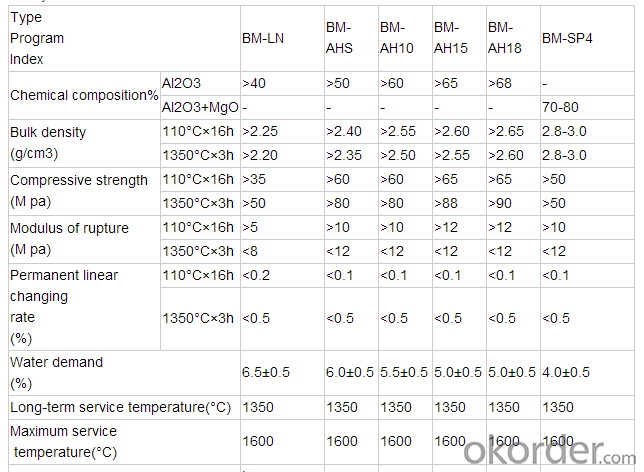
FAQ:
1. How you can control your quality?
For each production processing, we have complete QC system for the chemical composition
and Physical properties. After production, all the goods will be tested, and the quality certificate
will be shipped along with goods.
2. What's your delivery time?
It usually needs about 20days- 45 days after receiving the deposit.
3. Do you provide free samples?
Yes, we can provide a free sample for testing, If we have sample in stock,
The quantity based on the material type, The buyer should bear all the shipping costs.
4. What's your payment terms?
We can accept 30% deposit, 70% balance before shipment for ordrs over $ 2000.
5. Can we visit your Company?
Yes, certainly. You are very welcome to China and we will be honored to have a customer and friend.
Product Picture:

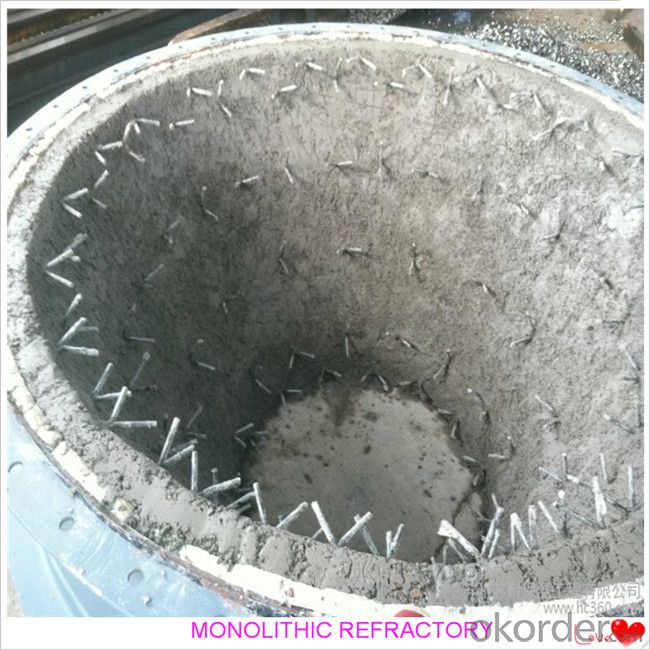

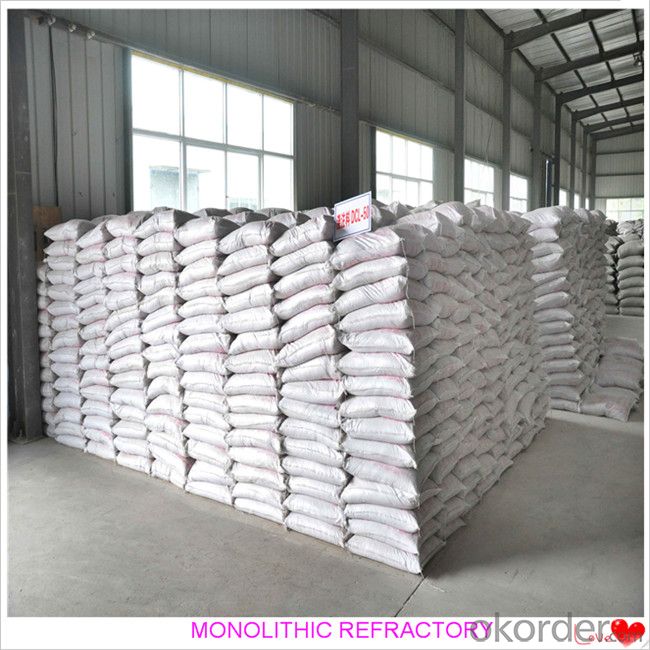
- Q: How are monolithic refractories applied in the hot face and cold face of furnace linings?
- Because of their superior thermal and mechanical properties, monolithic refractories are commonly utilized in furnace linings. These materials are employed in both the hot face and cold face of furnace linings, but their application methods differ for each. When it comes to the hot face of furnace linings, monolithic refractories are applied to endure extreme temperatures and harsh conditions. This area directly faces the heat source and is exposed to the highest temperatures. In this region, the refractory material is specifically engineered to possess excellent thermal conductivity and high resistance to thermal shock. To apply monolithic refractories in the hot face, the commonly used technique is gunning. Gunning involves the spraying or troweling of the refractory material onto the lining's surface. This technique enables quick and efficient application, ensuring a uniform and dense layer of refractory material. Gunning is especially suitable for areas with intricate shapes and contours. On the other hand, the primary concern for the cold face of furnace linings is insulation and protection. The cold face refers to the area that does not directly come into contact with the heat source and experiences lower temperatures. In this area, the refractory material is designed to possess low thermal conductivity and high insulation properties. The application of monolithic refractories in the cold face is typically accomplished using the technique called ramming. Ramming involves compacting the refractory material into place using a pneumatic or hydraulic ramming tool. This technique ensures the creation of a dense and solid layer of refractory material, providing excellent insulation and protection against heat loss. In conclusion, monolithic refractories are vital components of furnace linings as they provide the necessary thermal insulation and mechanical strength required in high-temperature environments. The application techniques of gunning and ramming allow for efficient and effective installation in both the hot face and cold face of furnace linings.
- Q: How do monolithic refractories improve the lining of converters and refining vessels?
- Monolithic refractories enhance the lining of converters and refining vessels by providing superior thermal insulation, chemical resistance, and structural integrity. They eliminate the need for bricklaying, offering a seamless lining with reduced joints, thereby minimizing heat loss and ensuring efficient heat transfer. Additionally, monolithic refractories are highly resistant to the corrosive effects of molten metals and slag, prolonging the lifespan of the lining. Their flexibility enables easy installation and repair, resulting in reduced downtime and improved overall performance of converters and refining vessels.
- Q: How do monolithic refractories contribute to the overall efficiency of ladle transfer processes?
- The efficiency of ladle transfer processes is greatly improved by the use of monolithic refractories. These refractories are made from a single, uniform material, making them easy to install and maintain. This feature reduces downtime during ladle transfers, ultimately increasing productivity. One of the ways in which monolithic refractories enhance efficiency is through their high thermal conductivity. Ladle transfers involve the movement of molten metal, which generates a significant amount of heat. Monolithic refractories have exceptional heat resistance, allowing them to withstand the extreme temperatures of the molten metal. This property prevents refractory failure and extends the lifespan of the ladle, resulting in more efficient and uninterrupted ladle transfer operations. Furthermore, monolithic refractories provide superior corrosion resistance. The corrosive nature of molten metal can cause considerable damage to ladles over time. However, monolithic refractories are specifically designed to withstand chemical attacks from molten metal, preventing the degradation of the ladle's integrity. Consequently, ladles lined with monolithic refractories have a longer lifespan and require less frequent replacement, leading to cost savings and improved efficiency. Another factor contributing to the efficiency of ladle transfer processes is the ability of monolithic refractories to conform to complex shapes and designs. Ladles come in various sizes and shapes, and monolithic refractories can be customized to perfectly fit the dimensions of the ladle. This precise fit minimizes heat loss and maximizes energy efficiency during ladle transfers. Additionally, monolithic refractories offer excellent mechanical strength and resistance to thermal shock. Ladle transfer processes involve the handling and movement of ladles, subjecting refractories to mechanical stresses. The exceptional mechanical properties of monolithic refractories ensure their durability and prevent cracking or spalling, reducing the risk of refractory failure and enhancing the efficiency of ladle transfer operations. In conclusion, the efficiency of ladle transfer processes is improved by the use of monolithic refractories due to their high thermal conductivity, corrosion resistance, precise lining fit, and excellent mechanical properties. These refractories enhance the durability of ladles, reduce downtime, and improve energy efficiency, resulting in cost savings and increased productivity in the steelmaking industry.
- Q: How are monolithic refractories installed and repaired in iron and steel applications?
- Monolithic refractories in iron and steel applications are installed by carefully preparing the surface, followed by applying and compacting the refractory material using various techniques like gunning, casting, ramming, or shotcreting. In terms of repair, damaged sections are usually removed and replaced with fresh refractory material, ensuring proper bonding and compaction to restore the integrity of the lining. Regular inspections and maintenance are essential to identify and address any potential issues promptly.
- Q: What are monolithic refractories and how are they used in the iron and steel industry?
- Monolithic refractories are a type of refractory material that is composed of a single, homogeneous structure. They are used in the iron and steel industry for various applications such as lining furnaces, ladles, and other high-temperature equipment. These refractories are typically made from a combination of aggregates, binders, and additives, which are mixed with water to form a plastic consistency. Once applied, they are dried and fired to create a strong and durable lining that can withstand extreme temperatures and chemical reactions. Monolithic refractories offer advantages like easy installation, excellent thermal shock resistance, and superior performance, making them crucial components in the iron and steel manufacturing process.
- Q: How do monolithic refractories contribute to the quality of iron and steel products?
- Monolithic refractories play a crucial role in enhancing the quality of iron and steel products. These refractories are comprised of a single, solid structure, making them highly resistant to thermal and mechanical stresses. Their unique properties make them well-suited for various high-temperature applications in the iron and steel industry. Firstly, monolithic refractories provide excellent thermal insulation, which helps to maintain a consistent temperature within the furnace or kiln. This stability in temperature is essential for the proper heat treatment of iron and steel, ensuring optimal metallurgical properties and reducing the risk of defects. By preventing heat loss, monolithic refractories enable efficient energy utilization, leading to cost savings and environmental benefits. Another significant contribution of monolithic refractories lies in their ability to withstand harsh operating conditions. The iron and steel manufacturing process involves extreme temperatures, aggressive chemical environments, and mechanical stresses. Monolithic refractories exhibit exceptional resistance to these conditions, ensuring durability and longevity. Their high resistance to thermal shock prevents cracking or spalling, which can lead to contamination and compromised product quality. Furthermore, monolithic refractories offer excellent corrosion resistance, protecting the iron and steel products from chemical reactions with molten metal, slag, and other aggressive substances. This resistance not only preserves the integrity of the refractory lining but also prevents contamination of the metal, resulting in improved product quality. Monolithic refractories also enable flexibility in design and installation. They can be shaped, cast, or gunned into various complex geometries, allowing for customization according to the specific requirements of the iron and steel production process. This versatility ensures optimal lining performance, maximizing efficiency and product quality. Overall, monolithic refractories contribute significantly to the quality of iron and steel products through their thermal insulation properties, resistance to harsh operating conditions, corrosion resistance, and design flexibility. By providing a reliable and durable lining in high-temperature applications, monolithic refractories help to ensure consistent and high-quality output in the iron and steel industry.
- Q: What are monolithic refractories and how are they different from other refractory materials?
- Monolithic refractories are a type of refractory material that is produced and applied in a single, unified form. Unlike other refractory materials, such as bricks or tiles, monolithic refractories are not pre-formed into specific shapes or sizes. Instead, they are generally composed of a mix of aggregates, binders, and additives, which are then installed in place and cured to form a solid, dense structure. One key difference between monolithic refractories and other refractory materials is their versatility and ease of installation. Traditional refractory bricks or tiles require skilled labor and careful assembly to create a lining or structure. Monolithic refractories, on the other hand, can be poured, sprayed, or gunned into place, allowing for a much faster and more efficient installation process. This makes them particularly suitable for complex shapes or areas that are difficult to access. Another difference lies in the physical properties of monolithic refractories. While bricks and tiles are typically characterized by their high mechanical strength and resistance to thermal shock, monolithic refractories can be tailored to exhibit a wide range of properties. They can be engineered to have excellent thermal insulation, superior corrosion resistance, or enhanced abrasion resistance, depending on the specific application requirements. This flexibility makes monolithic refractories suitable for a variety of industries, including steel, cement, glass, and petrochemical. Furthermore, monolithic refractories have the advantage of being able to expand and contract with temperature changes, unlike rigid brick structures. This thermal flexibility helps to minimize cracking and damage caused by thermal cycling, prolonging the lifespan of the refractory lining. Additionally, monolithic refractories offer better refractory integrity and reduced joint failure, as there are no seams or weak points that can be susceptible to thermal stresses. In summary, monolithic refractories are a versatile and convenient type of refractory material that can be customized to meet specific application requirements. Their ease of installation, thermal flexibility, and tailor-made properties make them distinct from other refractory materials such as bricks or tiles.
- Q: How do monolithic refractories contribute to the reduction of emissions in iron and steel plants?
- The role of monolithic refractories in iron and steel plants is crucial for reducing emissions and addressing environmental challenges. These refractories are utilized to line the high-temperature areas of furnaces, including blast furnaces and electric arc furnaces, which are vital for the production processes of iron and steel. The exceptional thermal insulation properties of monolithic refractories help to minimize heat loss and enhance energy efficiency. This reduction in heat loss translates to lower energy consumption and emissions as less fuel is required to maintain the desired temperature. Furthermore, monolithic refractories contribute to emissions reduction by optimizing the combustion process. Their ability to withstand extreme temperatures and resist thermal shock ensures that the furnaces operate at their optimal conditions. This leads to more efficient combustion of fuels and raw materials, resulting in a decrease in the release of harmful gases and pollutants into the atmosphere. Additionally, these refractories possess excellent resistance to chemical attacks and corrosion, which is particularly important in iron and steel plants where aggressive substances like molten metal, slag, and gases are present. By providing a protective lining, they prevent the degradation of furnace walls and equipment, reducing the risk of leaks and emissions. Moreover, monolithic refractories find application in the construction of pollution control devices such as flue gas desulfurization systems and baghouses. These systems are designed to capture and remove pollutants from the flue gases generated during iron and steel production. The use of refractories in these systems ensures their durability and longevity, enabling them to efficiently and effectively reduce emissions. In summary, monolithic refractories play a vital role in reducing emissions in iron and steel plants by improving energy efficiency, optimizing combustion, providing corrosion resistance, and supporting pollution control systems. Their implementation allows the industry to minimize its environmental impact and transition towards more sustainable and responsible production processes.
- Q: How are monolithic refractories manufactured?
- Manufacturing monolithic refractories is a specific process that consists of multiple steps. The initial step involves selecting and preparing raw materials, typically comprising aggregates, binders, and additives. Aggregates are chosen based on their chemical and physical properties, while binders are utilized to hold the aggregates together. Additives are incorporated to enhance specific properties of the refractory material. Once the raw materials are chosen, they are thoroughly mixed in precise proportions to create a uniform mixture. This mixture is then blended using different techniques such as dry or wet mixing, depending on the desired characteristics of the final product. Following the blending process, the subsequent step involves shaping the refractory material. This can be accomplished through various methods such as casting, gunning, ramming, or spraying. The selection of the method is based on the specific application and requirements of the refractory. After shaping, the refractory material undergoes a curing process. This entails drying the material at a controlled temperature to eliminate any excess moisture and promote the development of desired properties. Lastly, the cured refractory material is subjected to high temperatures in a kiln. This firing process further strengthens the refractory and enhances its ability to withstand heat and other harsh conditions. In summary, the manufacturing of monolithic refractories entails meticulous selection and preparation of raw materials, precise blending, shaping, curing, and firing procedures. This guarantees the production of superior-quality refractory materials capable of withstanding the extreme conditions encountered in various industrial applications.
- Q: How do monolithic refractories improve the efficiency of ladle and tundish drying systems?
- Monolithic refractories improve the efficiency of ladle and tundish drying systems by providing superior thermal insulation, reduced heat loss, and increased resistance to thermal shock. These refractories have high thermal conductivity and low heat capacity, enabling faster and more uniform heating of the ladle and tundish. Additionally, their monolithic nature eliminates joints and seams that could lead to heat leakage, ensuring better heat retention and improved energy efficiency. The enhanced thermal properties of monolithic refractories contribute to quicker drying times and reduced energy consumption in ladle and tundish drying processes, ultimately improving overall system efficiency.
Send your message to us
Monolithic Refractories for Iron and Steel Industry - High Alumina Castable for Fireside and Industrial Furnace
- Loading Port:
- China main port
- Payment Terms:
- TT OR LC
- Min Order Qty:
- 1000 kg
- Supply Capability:
- 3000000 kg/month
OKorder Service Pledge
OKorder Financial Service
Similar products
Hot products
Hot Searches
Related keywords

